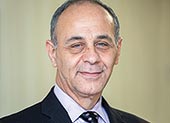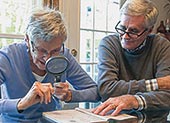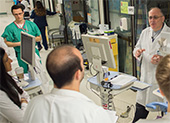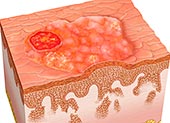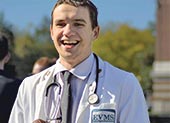Has sepsis met its match?
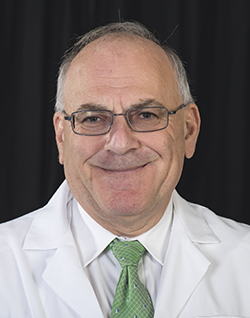
Dr. Marik is board certified in Internal Medicine, Critical Care Medicine, Neurocritical Care and Nutrition Science. He has written over 400 peer-reviewed journal articles, 80 book chapters and authored four critical care books. He is the 2017 recipient of the Outstanding Educator Award from the American College of Physicians for his work with medical residents and fellows.
Dr. Marik has been featured in The Washington Post regarding end-of-life healthcare in the United States.
Sepsis, an infection that kills millions worldwide each year and is the third leading cause of death in the United States, may have finally met its match.
Paul Marik, MBBCh, the EVMS Foundation Distinguished Professor in Internal Medicine, Professor of Internal Medicine and Chief of Pulmonary and Critical Care Medicine, believes he has developed a cure for the life-threatening infection. His innovative treatment breakthrough – a product of medical intuition and serendipity – promises to revolutionize sepsis care worldwide and produce results that are nothing short of astonishing.
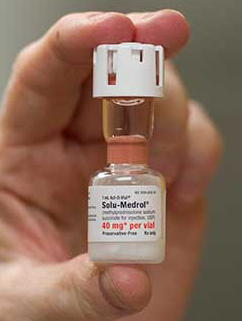
The Marik Protocol
Vitamin C is often used intravenously as part of a treatment for cancer.
Hydrocortisone is commonly used to relieve inflammation and for a variety of conditions ranging from arthritis to severe allergies and asthma.
Thiamine is a vitamin commonly used as a dietary supplement.
Sepsis kills more than 250,000 people in the U.S. annually and is responsible for eight million deaths globally each year. It is the leading cause of death among hospitalized patient.
“Dr. Marik has developed a brilliant and elegantly simple hypothesis in the treatment of sepsis,” says Richard Homan, MD, President and Provost of EVMS and Dean of the School of Medicine. “The implications of the findings are profound and, if replicated, may transform the treatment of sepsis worldwide.”
As a critical-care physician and head of the general intensive care unit (GICU) at Sentara Norfolk General Hospital, Dr. Marik used to be locked in a life-and-death struggle with sepsis. Despite his efforts, one to two people under his care died each week from the disease. That all changed unexpectedly Jan. 5, 2016.
The breakthrough came as Dr. Marik struggled to save a woman dying from overwhelming sepsis. He had recently read about vitamin C as a potential treatment for sepsis, and he recalled that steroids, a common treatment for sepsis, might work well in concert with the vitamin C.
Aware that both were safe and would not harm the patient, he gave her the vitamin C and steroid combination intravenously.
Within hours, his patient was recovering. Two days later she was well enough to leave the ICU.
Dr. Marik and is colleagues were astonished. “We said, ‘What just happened?’”
In the following days they used the combination therapy on two more patients seemingly destined to die of sepsis. Twice more the patients recovered. Dr. Marik and his team quickly adopted the combination therapy as standard practice.
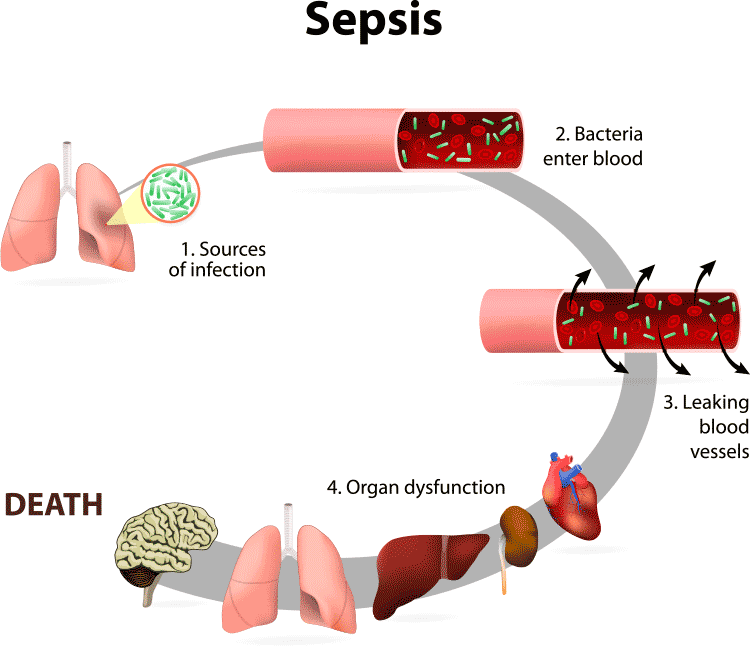
What is sepis?
A potentially life-threatening complication of an infection. It's mostly dangerous and common in older adults or those with compromised immune systems, however, it can develop in anyone.
Despite the continued successes, Dr. Marik found that many colleagues were skeptical. For one thing, pharmaceutical companies have conducted more than 100 clinical trials and spent hundreds of millions of dollars over the last 25 years in an unsuccessful search for a sepsis treatment.
And then there is vitamin C. It has been purported as a cure or treatment for a wide range of conditions — with little scientific evidence of its effectiveness.
To strengthen his case and to allay his own apprehensions that this was too good to be true, Dr. Marik worked with colleagues to study the interaction in a lab setting. Two separate biological tests proved that vitamin C and steroids were effective against sepsis — but only when used together.
"We haven’t seen a patient die of sepsis since we began using the combination therapy a year ago,” Dr. Marik says. “We have completely changed the natural history of sepsis.”
A year after Dr. Marik’s chance discovery, sepsis has become a controllable infection in his ICU. Other hospitals and ICUs are beginning to adopt the combination treatment.
Dr. Marik’s findings are published in CHEST, the journal of the American College of Chest Physicians.
“We haven’t seen a patient die of sepsis since we began using the combination therapy a year ago,” Dr. Marik said one year to the day after treating the first patient. “We have completely changed the natural history of sepsis.”
Find more information for medical professionals and members of the media.
More in EVMS Magazine



